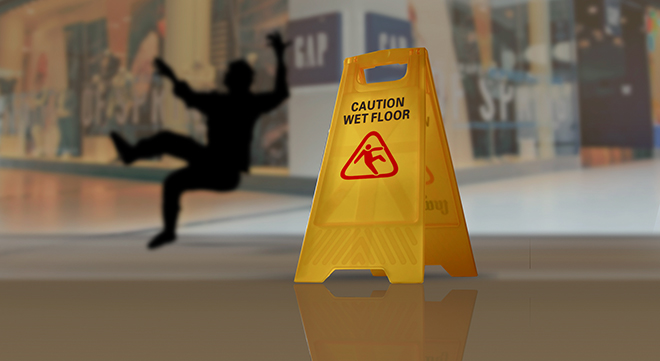For the first time in two years, consumers will be able to shop on Black Friday without any lockdown restrictions. With the anticipated large-scale return of consumers to physical stores, this year’s Black Friday presents a significant liability risk for mall owners and retailers in terms of the increased likelihood of shoppers experiencing some form of physical injury.
Industry experts are therefore urging retailers to have thorough risk management strategies in place to avoid being impacted by “slip and trip” claims over this busy period.
Dasran Padayachee, team manager for financial lines, professional indemnity and liability claims at SHA Risk Specialists, says the 2022 SHA Specialist Risk Review shows a direct correlation between the lifting of hard lockdown restrictions and a jump in personal injury claims.
Typically, specialist insurers have attributed an increase in foot traffic to an increase in public liability claims, with SHA reporting that the number of claims made in 2021 exceeded pre-pandemic figures.
Jonathan Kaiser, team manager for financial lines, professional indemnity and liability claims at SHA, says: “Ancillary data collected by SHA suggests that ‘slip and trip’ claims may very well be on the rise. Across all lines, recorded claims in 2022 so far have exceeded last year’s average by over 1 000 new claims, with ‘slip and trip’ claims being estimated to rise by at least 14%.”
In light of the fact that previous years have seen mobs of bargain hunters and huge crowds descending on retail outlets and shopping malls over the Black Friday weekend, retailers should be on high alert.
Levels of risk
Padayachee says there are three major levels of risk to consider that fall within the scope of public liability:
- The financial impact on businesses of a large number of valid claims and the valuation of those claims.
- The knock-on effects of reputational risk, where retailers could be regarded by the public as being unsafe or dangerous.
- Personal injury claims can put a target on the back of retailers that are particularly vulnerable to fabricated claims by opportunistic fraudsters.
Where personal injury or loss is incurred within a retail space, the onus falls on the patron to prove that the relevant owner or trader has neglected their legal obligation to provide a reasonably safe shopping environment. Legitimate claims are based on firm evidence that the store owner has breached his or her duty of care, in which case an investigation will ensue.
For this reason, retailers are advised to keep proper records of all incidents that occur, accompanied by video footage and witness statements where necessary. This information should be collated soon after the incident occurs, to bolster the retailer’s credibility and ensure accurate recollection of the incident, to mitigate the chance of fraudulent claims.
Health and safety protocols
“Slip and trip” incidents in retail environments commonly occur in areas that are under maintenance or during cleaning. This highlights the crucial role of health and safety protocols and written agreements between insured retailers and their contractors to abide by the correct processes.
Elaborating on the practical application of these protocols, Kaiser suggests that the following measures should be commonplace within retail stores:
- Walking surfaces should never be unduly slippery, and any hazards to this effect should be demarcated with legible warning signs.
- All areas and walkways should be well lit and properly maintained and repaired where necessary.
- All railings, barriers and fixtures need to be properly secured to avoid any risk of falling.
- Retailers should use clear signage to draw patrons’ attention to any risks within the area of operation, and disclaimer notices that indemnify the retailer against personal injury should be clearly visible.
Furthermore, public liability insurance policies are integral components of risk management strategies against claims from third parties, particularly in relation to “slip and trip” incidents. Businesses should therefore also have suitable risk escalation processes in place to ensure that incidents are reported internally and to their insurer, to remain compliant with the terms of their policy.
Kaiser encourages retailers and commercial property owners to include and formalise risk management strategies in their preparations for Black Friday.
“This should include talking to your legal adviser, broker or insurer about your responsibilities as a retailer, as well as the legal best practices for handling incidents if and when they do occur. As always, when it comes to navigating the precarious landscape of public liability, prevention and risk management are the best forms of protection.”



